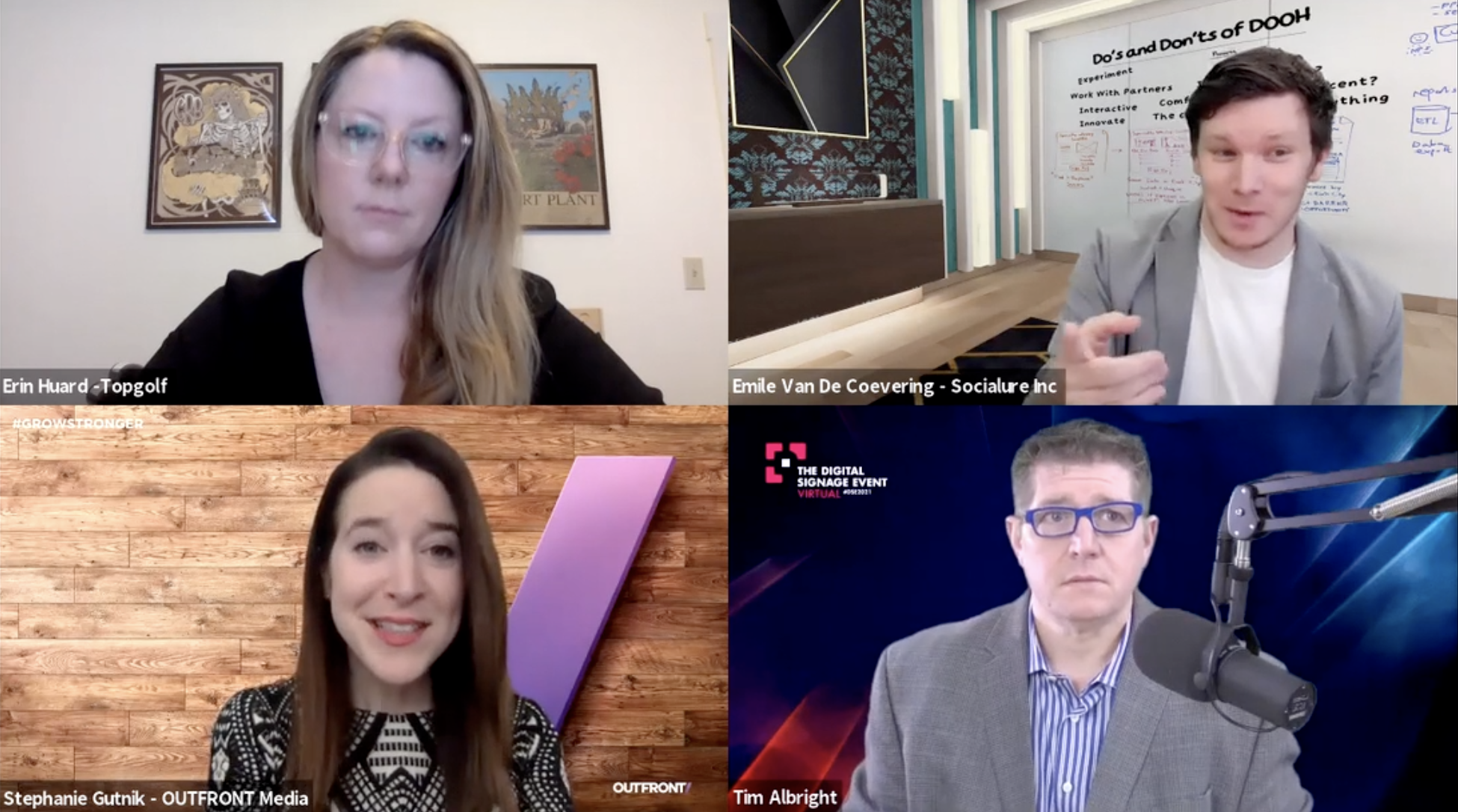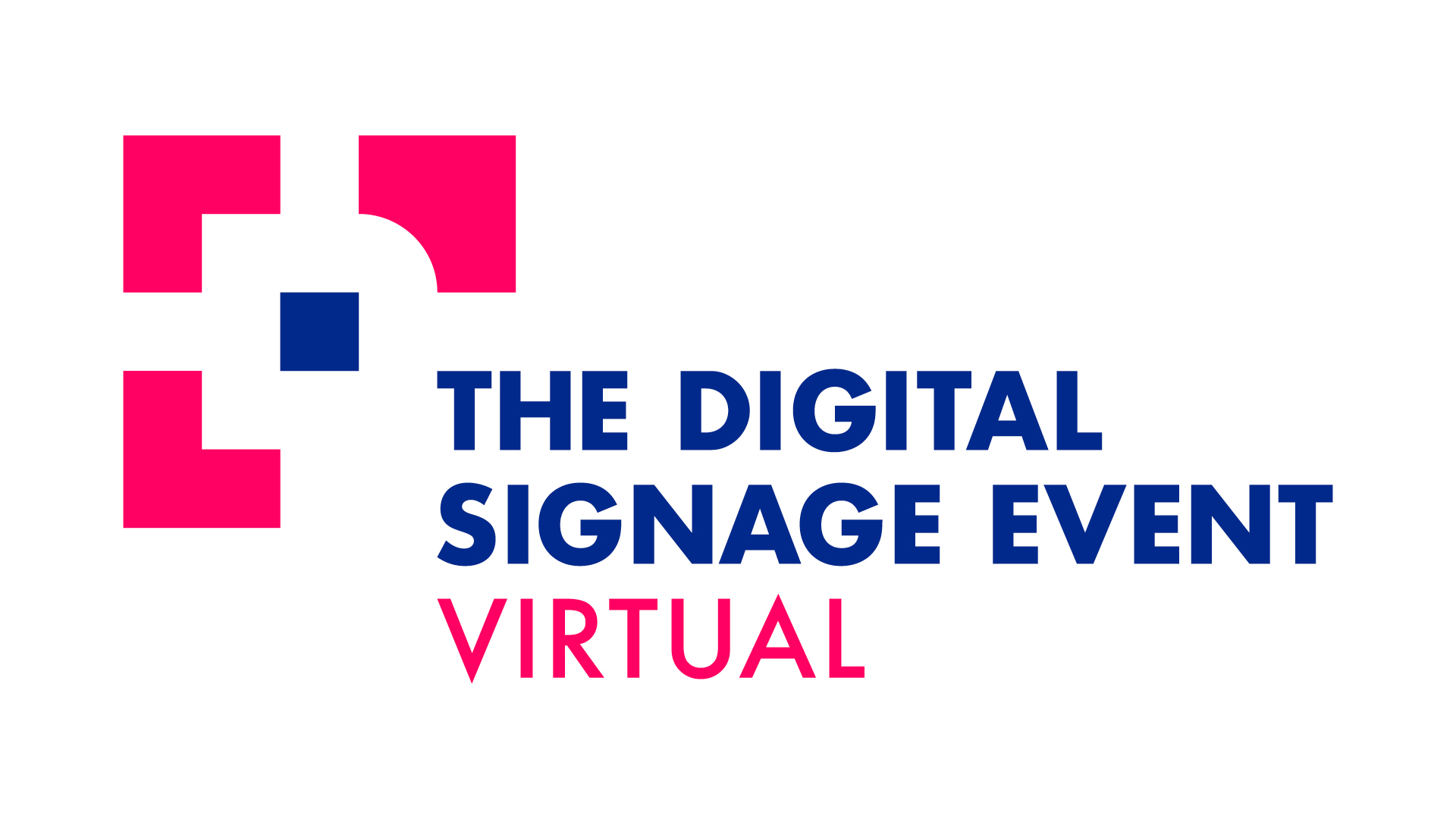DSE 2021 Panel Discusses Managing DOOH Clients

The “The Do’s and Don’ts of DOOH” panel held at the Digital Signage Virtual Event last week covered the complex relationships between marketers, distributors, and creatives in the digital out-of-home (DOOH) marketplace. The panel featured Emile Van De Coevering from digital signage content creator Socialure; Stephanie Gutnik from OOH publisher OUTFRONT Media; and Erin Huard from TopGolf, which uses digital signage to enhance the experience of its more than 20 million guests annually. The session was moderated by AVNation’s Tim Albright, and dove into topics such as best practices, privacy, and programmatic programs.
Best Practices of DOOH

“The Do's and Don'ts of DOOH” is available on demand at thedigitalsignageevent.vfairs.com. Log in to watch this presentation and others.
In terms of best practices, Van De Coevering opened the conversation with advising digital sign owners to upgrade their equipment—even if it’s working fine. “There're plenty of signs that I come across that are 10 years—maybe even 20 years—old,” he said. “It is obviously very hard to create content to put on those boards and to make sure it looks good.”
“It's almost as if you have to treat your screens like they were appliances,” added Gutnik. “You hope that they're built to last for a long time, but as technology upgrades itself, you want to stay current with it. It's not always going to be a faulty screen that needs to be replaced—sometimes there's going to be an inability to play certain content or integrate with certain tech tools that you need.”
Tailored DOOH Messages
The panel then discussed the need to get clients to tailor their messages for the DOOH experience, noting that dropping a Google ad on a giant sign without sound will not have the same impact that a thoughtful campaign designed for digital signage will have. “A lot of times the elements we have are the commercial or the Google ad or other marketing materials, and that's where our work starts,” said Van De Coevering. “That's where we can be creative and figure out can we make the best use of this canvas we have—how we can make the best use and also take advantage of the different analytics this canvas offers.”
DOOH and Privacy
Analytics led the group into a discussion on privacy in DOOH, which was on everyone’s minds especially with the announcement that Google would no longer track viewers.
“I care deeply about privacy, and I hate nothing more than being followed around the Internet,” said Huard. “I don't want that to cross the lines into digital out of home. I think it's about having those conversations early with the client and setting the right expectations to say we're not going to give you all the data that you might be looking for, because there are other means of doing that. Digital out of home could be useful to play into their omni-channel marketing mix, but at the same time we don't need to know that this person looked for Moroccan rugs on their phone at home and then went to another location and saw another ad for that. It gets a bit awkward.
“It's more important to target based upon the location that you're in. It's more of a challenge for media owners like OUTFRONT where it could be anyone driving past a billboard, but for very specialized media like TopGolf we say ‘make it millennial friendly’ and whatever business insights and metrics will play into that across the board.”
A daily selection of features, industry news, and analysis for AV/IT professionals. Sign up below.
“OUTFRONT's stance is that out-of-home is inherently safe in terms of being privacy compliant when it comes to GDPR or the California Consumer Privacy Act and that's being followed on a state-by-state basis,” added Gutnik. “There's nothing associated with these screens unless you go and physically add a camera for analytics, which we don't do right now.
“When we look at like the death of the cookie, I'm not upset that they're going away in the AdTech space. Five-plus years ago, when trying to pitch out-of-home programmatically, the biggest question was, ‘How do we track viewers because OOH of home doesn’t have cookies?’ We don't get that question anymore because nobody's using them. All of the privacy advancements really are only benefiting out-of-home, in my opinion.”
Van De Coevering thought tracking analytics were fine, so long as you are transparent with what you are doing. “When you don't explain what's happening, people get creeped out,” he said. “It's a little bit scary.”
Programmatic and DOOH
With time running out, the quartet jumped into a discussion on programmatic advertising and what it means for DOOH. “Over 88 percent of digital ads are sold programmatically, with a very small fraction of that in out-of-home, but it's certainly going to grow,” said Gutnik. “DOOH is not the digital world where you can refresh and there's a new opportunity for an ad to play. We have a limited number of screens and, because of that, it makes supply that much more valuable. For advertisers who are getting into programmatic out-of-home for the first time—who have been buying programmatically in other channels—there's a lot of education to be had in terms of saying that some of these screens might actually be sold out.”
For more coverage of The Digital Signage Event, visit our hub page.
